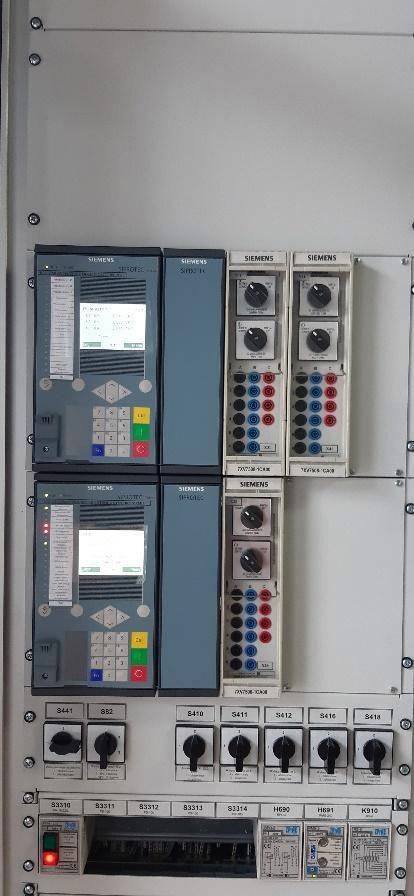Electrical power equipment – types and classification of protection

The generation, transmission, distribution and reception of electricity require the efficient operation of many types of electrical power equipment. What are these devices, and how to secure functioning of the entire energy systems and installations they comprise?
Electric power equipment includes all the units involved in the production of electricity, its transfer and also its reception. Depending on their purpose and function, they are divided into several groups. These are:
- electricity generation equipment, which includes power generators,
- processing equipment such as transformers, converters or rectifiers,
- transmission, which include overhead power lines, cable lines and buses,
- distribution, i.e. all kinds of fuses, switches, disconnectors, isolators,
- consumer (final appliances supplied with current, for example motors, lighting, heaters, etc.),
- auxiliary, i.e. control, measurement, signalling and safety.
Electrical power equipment and protections
Power systems and equipment require various types of protection to function properly. Their operation is affected by many factors which may disrupt the correct functioning of the installation, cause it to fail, or generate a serious danger to the operator or users of the equipment or bystanders (power failures, fault currents, overvoltages, fires, etc.). Safety in the power industry is the responsibility of the PPS – electric Power Protection System automatics. Eltel Networks also deals in this field of knowledge and practical solutions, included in its experience and offer.
Classification of protections
PPS is the efficient, real-time monitoring and control of the power system – both when the power equipment making it up is working properly and when there are disturbances in its operation. Electric Power Protection System automatics can both prevent and correct potential problems. PPS equipment monitors the operation of individual system components, warns in the event of system malfunctions, and automatically disconnects whatever may cause further problems or any danger. Three groups of devices can be distinguished here (depending on their role in the system) and three types of tasks that are carried out in the framework of the Power Protection System automatics.
- Preventive units
They are protections which detect possible deviations occurring in the operation of a given power system and, in due time, alert on the occurrence of such irregularities. - Corrective units
This type of protection units protect the power system by immediately disconnecting from it a component that has failed or a disturbance in its operation could adversely affect the operation of the entire system. - Recovery units
This type of protection is in turn intended to restore the normal operation of the power system after removing the failure and/or the cause of the disturbance, i.e. to automatically configure it to the original state.
The individual PPS functions are carried out sequentially in the security system, so there is constant observation of the system, possible detection and recognition of a problem and specific action.
Protection-related devices
An important role in the power protecting system is played by devices supporting protections, i.e. transformers (current and voltage) and circuit breakers.
Most of the signals measured by protection devices or fault recorders in power systems come from transformers. Current transformer isolates measuring and protection equipment from high-voltage circuits and converts primary current values into rated values. Voltage transformer, on the other hand, is used to transform the voltage to the desired rated voltage for supplying measuring instruments and relays. The use of transformers therefore allows safe operation of measuring instruments and enables remote measurement of electrical quantities at the same time.
Electrical switches (commonly known as circuit breakers) are also required, i.e. mechanisms capable of switching on, conducting and switching off current – both under normal circuit operation and in the event of an overload or short circuit.
Methods for protecting components of electricity networks
High-voltage and low-voltage lines are protected, depending on the type of line, by an appropriate set of electrical protection devices – primary and backup. Distance and section protections are used as basic protections. The backup protection is the zero-sequence overcurrent protections. What does this mean?
- Distance protections
Are based on distance relays, the most important advantage of which is that, when installed on a given line, they can quickly detect (and react to) e.g. short-circuits also on neighbouring lines. - Sectional protections
Are longitudinal differential protections that operate by measuring the vectorial difference of currents at the beginning and the end of the protected line. - Overcurrent protections
React to an increase in the value of the current flowing in the protected line during the occurrence of a high-current short circuit.
What does Eltel Networks offer in the field of electrical power protections?
Eltel Networks Energetyka SA offers its customers, among others, the following services: overhauls, diagnostics and repairs of power equipment, power protection systems, automatics, control and signalling of MV and HV switchgear fields, start-up of power generators in the field of secondary circuits, configuration and tests of digital protection terminals for MV and HV switchgear fields, configuration of controllers and signalling devices, measurements of equipment and electrical apparatus (transformers, circuit breakers, transformers), as well as inspections and fire protection measurements of HV installations in industrial and public buildings.
More about Eltel Networks services.


See also, what to look for when choosing a company offering electrical services.
Author: Dawid Duży